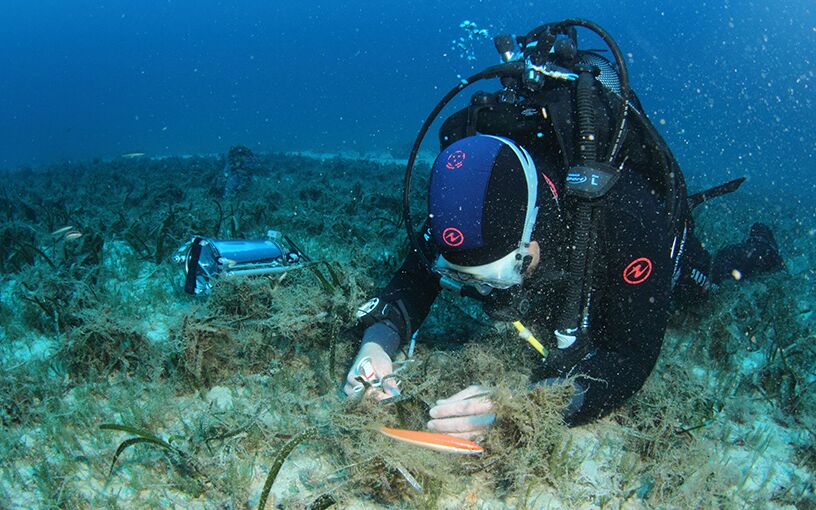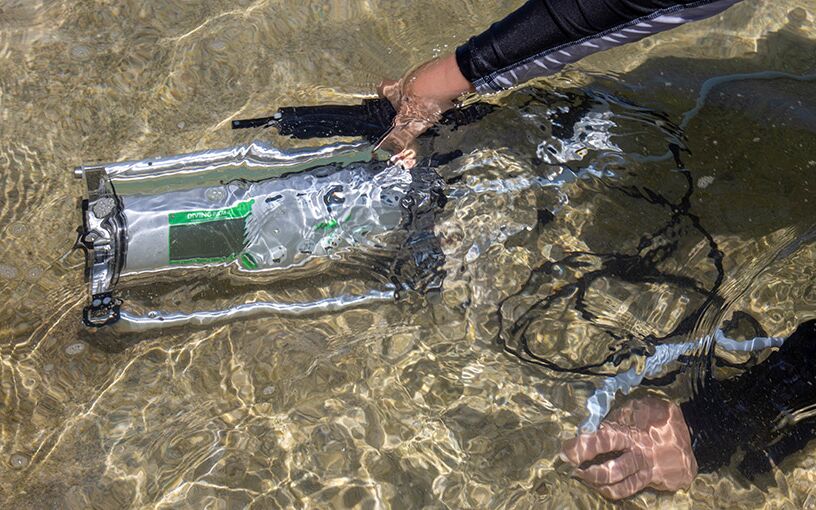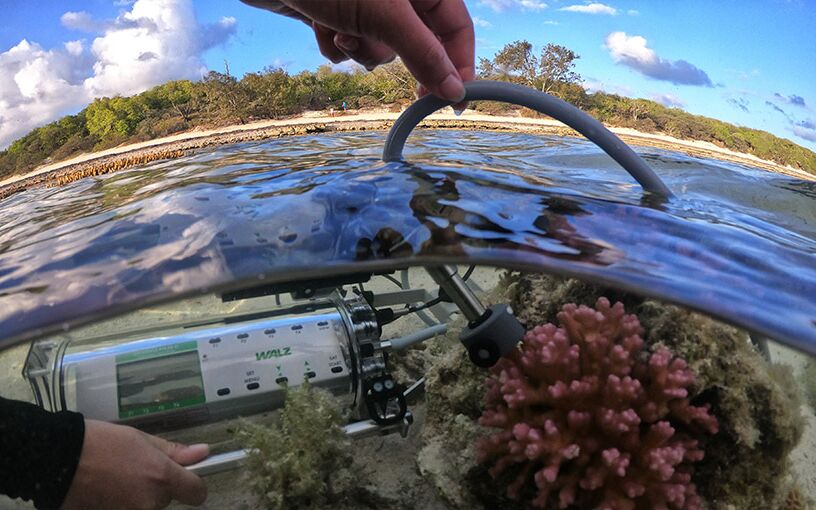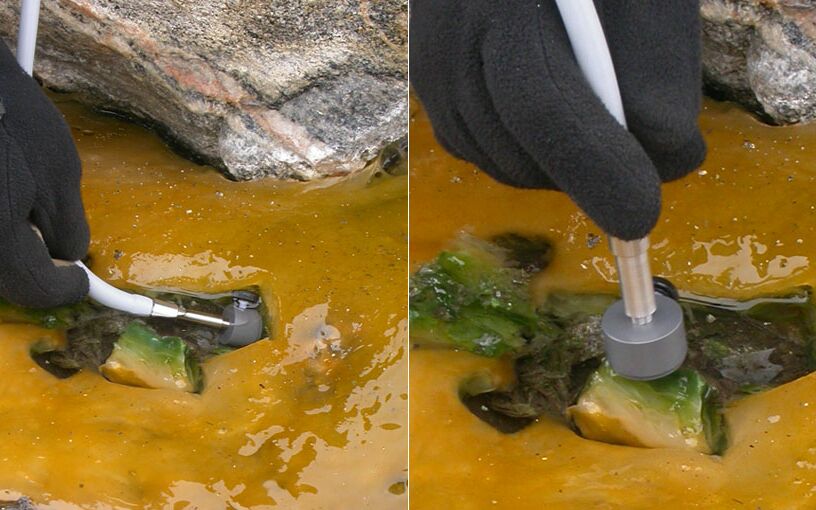DIVING-PAM-II
Underwater Fluorometer with Miniature Spectrometer
Caratteristiche
The launch of the DIVING-PAM underwater fluorometer started the era of PAM fluorescence analysis of photosynthetic organisms in their natural habitat. The second-generation underwater fluorometer, the DIVING-PAM-II, extents this era with the latest technology.
The DIVING-PAM-II exclusively uses LEDs as internal light sources, which permits exact timing of switching processes, and prevents overheating by continuous illumination. A built-in PAR sensor continuously records the intensity of internal light. An energy-efficient B/W screen shows data and settings numerically and graphically.
The DIVING-PAM-II system includes a Miniature Spectrometer MINI-SPEC to measures spectra of PAR, which vary significantly with water depth. The total external PAR is automatically calculated. The spectrometer also permits spectral analyses of the sample’s fluorescence emission and reflectance.
Outstanding Properties of the DIVING-PAM-II
- System package with underwater spectrometer
- Operating range up to 50 m diving depth
- Internal PAR sensor
- Red or blue plus far-red light
In situ investigations of cyanobacterial photosynthesis using a Walz DIVING-PAM fluorometer has been released. The video was recorded during a research campaign in Greenland (2013) which was targeted to photosynthesis of algae on surfaces of submarine mineral formations (ikaide columns). This research campaign was sponsored in part by Walz.
General Features DIVING-PAM-II
The cylinder-shaped DIVING-PAM-II fluorometer is approved for water depth down to 50 m. Advanced sensors record pressure and temperature. A high power LED is used for actinic light and saturation pulses. A far red LED for specific PS I excitation is installed. A proven fiberoptics connects sample and DIVING-PAM-II. All relevant parameters of saturation pulse analysis are automatically calculated.

Scientific dive to study aquatic photosynthesis. By courtesy of Arnaud Abadie.

Measuring photosynthesis in beach rock biofilm, Heron Island, GBR, Australia. Photograph courtesy of Erik Trampe, Department of Biology, University of Copenhagen.

Measuring photosynthesis in the coral Pocillopora damicornis, Heron Island, GBR, Australia. Photograph courtesy of Erik Trampe, Department of Biology, University of Copenhagen.

Photosynthesis examined in hot springs of Greenland. By courtesy of
| Campo di misura |
0 ... 20000 µmol m-2s-1 PAR
|
|---|---|
| Risoluzione |
1 µmol m-2s-1 PAR
|
| Input/Output |
Seriale RS232
|
| Alimentazione |
Batteria 12V 2Ah
|
| Dimensioni e peso |
Dimensioni: 19 cm x 39 cm
Peso 3,7Kg
|
| Garanzia |
2 anni
|
Prodotti correlati
CI-340 DUAL-KLAS-NIR DUAL-PAM-100 F-940 Store It! Gas Analyzer GFS-3000 HEXAGON-IMAGING-PAM IMAGING-PAM M-Series JUNIOR-PAM LEAF-STATE-ANALYZER LSA-2050 MICRO-PAM MICROFIBER-PAM MICROSCOPY-PAM MINI-PAM-II Monitoring-PAM MULTI-COLOR-PAM MULTI-COLOR-PAM-II PAM-2500 PHYTO-PAM-II TOXY-PAM ULM-500 WATER-PAM-IIRichiesta quotazione


